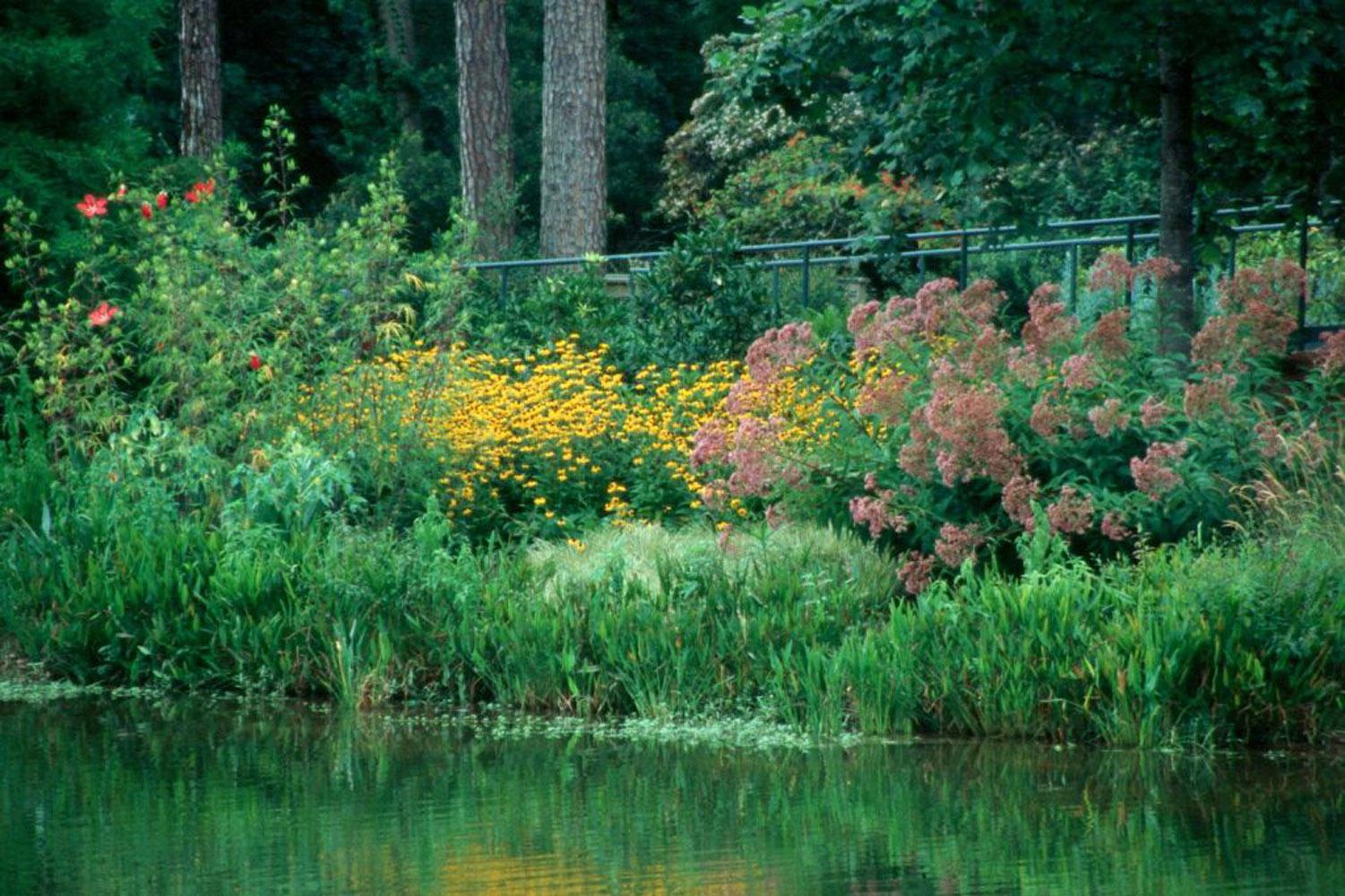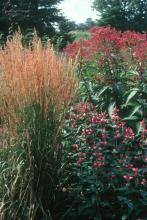Information Possibly Outdated
The information presented on this page was originally released on August 5, 2004. It may not be outdated, but please search our site for more current information. If you plan to quote or reference this information in a publication, please check with the Extension specialist or author before proceeding.
All can enjoy Joe Pye weed
By Norman Winter
MSU Horticulturist
Central Mississippi Research & Extension Center
A reporter once asked me, "If you could convince all garden centers to sell one perennial, what would it be?" The answer was simple for me: the Joe Pye weed.
Since that question was asked a little over a year ago, I have found more of them for sale. One garden center I visited even had three varieties. This time of year when a lot of plants are starting to look a little rough, the Joe Pye weed is showing out. Not only does it draw the attention of passers-by, but also it attracts scores of swallowtail butterflies and bees.
I imagine out there somewhere, someone wonders why I am promoting a weed. Don't let the name throw you. This relative of the chrysanthemum is loved worldwide and has made it into gardens everywhere. Here, unfortunately, many people just admire it on the roadsides where it is native.
Legend has it that Joe Pye was a Native American Indian who used the plant to cure fever. While Joe Pye weed's medicinal properties are not known, its placement as a landscape perennial is a sure thing.
The Joe Pye is known botanically as Eupatorium, and we find several species that gather under the Joe Pye name. The native most often seen is Eupatorium purpureum, a variety that produces rose-pink flowers on stalks that may reach 6 to 8 feet tall. Place these toward the back of the border.
Very similar is the E. fistulosum, sometimes called Giant Joe Pye weed. This variety has been reported to reach 12 feet tall, but it is normally in the 7- to 8-foot range.
The impetus for a rise in popularity, however, may be two shorter selections.
The first is called Gateway, a variety of E. maculatum that reaches only 4 feet tall. This one came to us courtesy of Bailey's Nursery in Minneapolis-St. Paul. I am growing it in a mixed container on the deck and absolutely love it. This one has found great favor throughout the Southeast.
The other has become almost as popular as Gateway and goes by the name of Chocolate. It is a selection of E. rugosum. Its bronze leaves pair up nicely with its deep-pink flowers. The plant may be a little shorter than Gateway.
Regardless of the one you choose, remember that the Joe Pye does best in fertile, loamy soil. To look their best they will need supplemental water during the summer, especially since now is their peak season. Plant them at least 3 feet apart.
Once they get started, you may feel like you can gather the neighbors to come over and watch them grow. With this rapid growth, you may find it to your liking to pinch a couple of times to encourage branching.
Watch for the spread of volunteers and seedlings, and remove the unwanted plants. Rest assured someone in the neighborhood will probably like a start.
Use the Joe Pye with Purple Fountain grass, Salvia guaranitica selections and Goldsturm rudbeckia. Joe Pye is hardy from zones 4 through 9, so just about everyone can enjoy its beauty -- including the butterflies that are sure to arrive.




